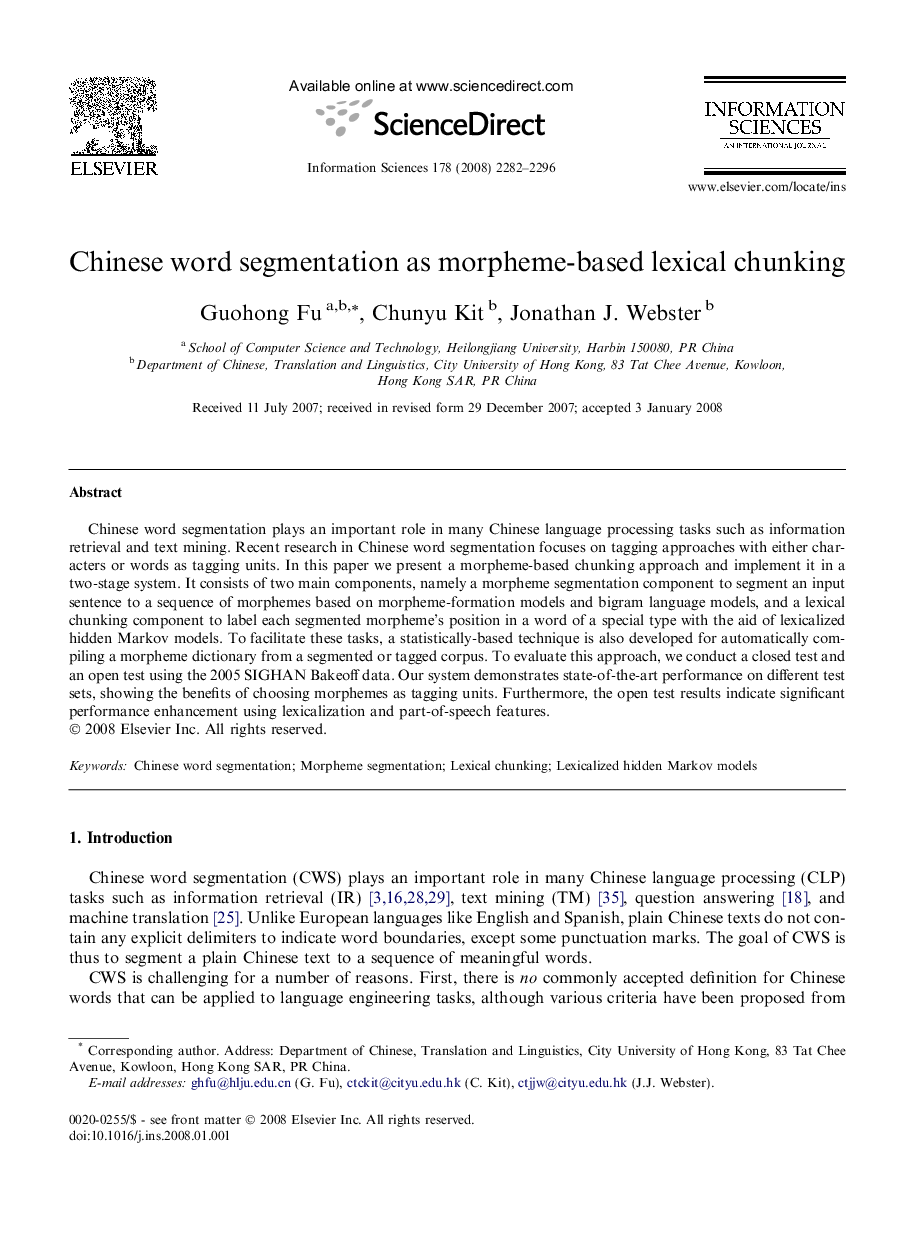| Article ID | Journal | Published Year | Pages | File Type |
|---|---|---|---|---|
| 394955 | Information Sciences | 2008 | 15 Pages |
Chinese word segmentation plays an important role in many Chinese language processing tasks such as information retrieval and text mining. Recent research in Chinese word segmentation focuses on tagging approaches with either characters or words as tagging units. In this paper we present a morpheme-based chunking approach and implement it in a two-stage system. It consists of two main components, namely a morpheme segmentation component to segment an input sentence to a sequence of morphemes based on morpheme-formation models and bigram language models, and a lexical chunking component to label each segmented morpheme’s position in a word of a special type with the aid of lexicalized hidden Markov models. To facilitate these tasks, a statistically-based technique is also developed for automatically compiling a morpheme dictionary from a segmented or tagged corpus. To evaluate this approach, we conduct a closed test and an open test using the 2005 SIGHAN Bakeoff data. Our system demonstrates state-of-the-art performance on different test sets, showing the benefits of choosing morphemes as tagging units. Furthermore, the open test results indicate significant performance enhancement using lexicalization and part-of-speech features.
